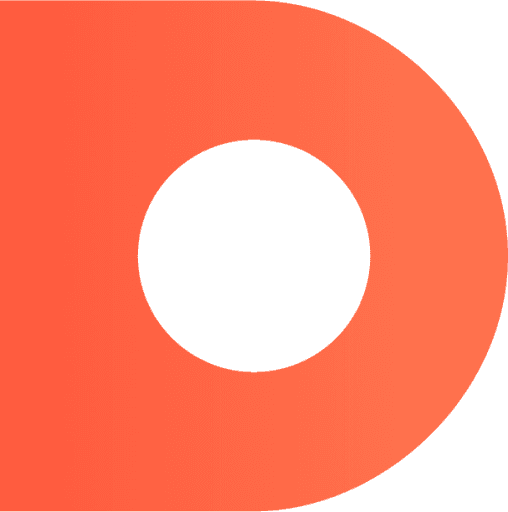The adoption of artificial intelligence in 2023 has been remarkably unprecedented. Disruptive technologies like ChatGPT, Bard, and Midjourney enable all types of businesses to achieve new levels of efficiency, autonomy, and creativity. In the world of B2B SaaS websites, marketing teams are embracing AI to formulate content strategies, scale content production, and foster unique web experiences.
As a web design agency that works with some of the fastest-growing, most forward-thinking companies in tech, we are already collaborating with clients to find revolutionary ways to integrate AI into their websites. In this client story, we will showcase how Webstacks helped UpKeep be at the forefront of applying cutting-edge AI to SaaS websites.
Who is UpKeep?

UpKeep is a computerized maintenance management system (CMMS) designed to help organizations streamline and manage maintenance processes. Their products assist maintenance teams with seamlessly monitoring asset and equipment data, which allows for more reliable, predictable, and profitable business operations. UpKeep’s mobile-first CMMS provides solutions for various industries, including manufacturing, facilities management, and property management.
Webstacks has had the privilege of working with the amazing team at UpKeep for over 2 years. Since the beginning of our engagement, we’ve led several initiatives to help scale the UpKeep site, including a website redesign, and migration from WordPress to a modern front-end and headless CMS.
Today, Webstacks continues to provide ongoing support to UpKeep, growing their website with innovative experiences and features - including AI.
An Introduction to OpenAI
OpenAI is undoubtedly the leader in artificial intelligence so far. Most notably, they are the creators of ChatGPT - the most intelligent and capable chatbot ever created. Along with ChatGPT, the company launched the OpenAI API, which enables developers further to utilize their AI models for many other use cases. So far, engineers have used the API for content creation, code generation, sentiment analysis, summarization, ideation, and translation.
All in all, it is difficult to quantify exactly what the AI is capable of. When integrated with a website, the API unlocks a new realm of possibilities. With a little creativity, you can invent novel applications that are uniquely specific to your website, products, and organization. UpKeep is a tremendous example of just this.
Using AI to Generate Content for UpKeep
Through OpenAI’s API, Webstacks’ developers can integrate the AI technology directly with clients’ websites. One of the key advantages of this API is that it is extremely simple to implement. We don't need to change anything within the website’s structure, nor do we need to complete any training or testing. Once you integrate the API, you are ready to start building.
As you will see with UpKeep, the potential this uncovers for website experiences is truly revolutionary. In just a couple of months, we helped UpKeep launch two AI website projects that have been tremendously well-received by users: the Checklist Generator and an AI-powered search engine.
The Checklist Generator
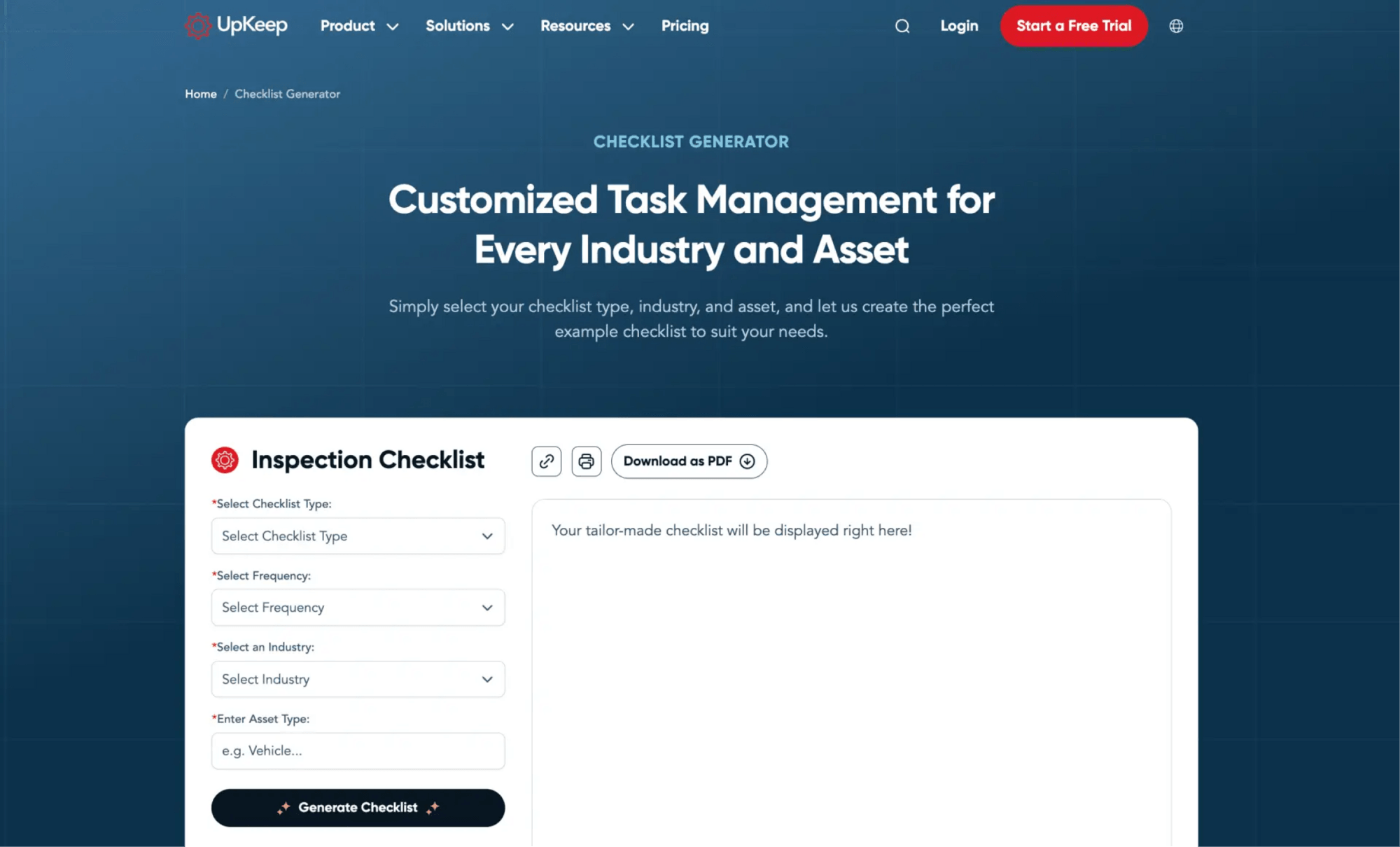
UpKeep’s target audience is constantly evaluating the physical condition of equipment to ensure safe and smooth operations. But before performing any maintenance, you must have the processes in place to conduct a proper inspection.
For this reason, the Checklist Generator was created.
The Checklist Generator is an AI tool that provides users with a thorough list of steps for servicing an asset or piece of equipment. A user can create a checklist for any type of asset and refine it by selecting the type of inspection, frequency, and specific industry. In the back-end, these fields help the AI refine its response to be as precise and accurate as possible.
Take “Weekly Inspections for Conveyor Belts in Manufacturing,” for example.
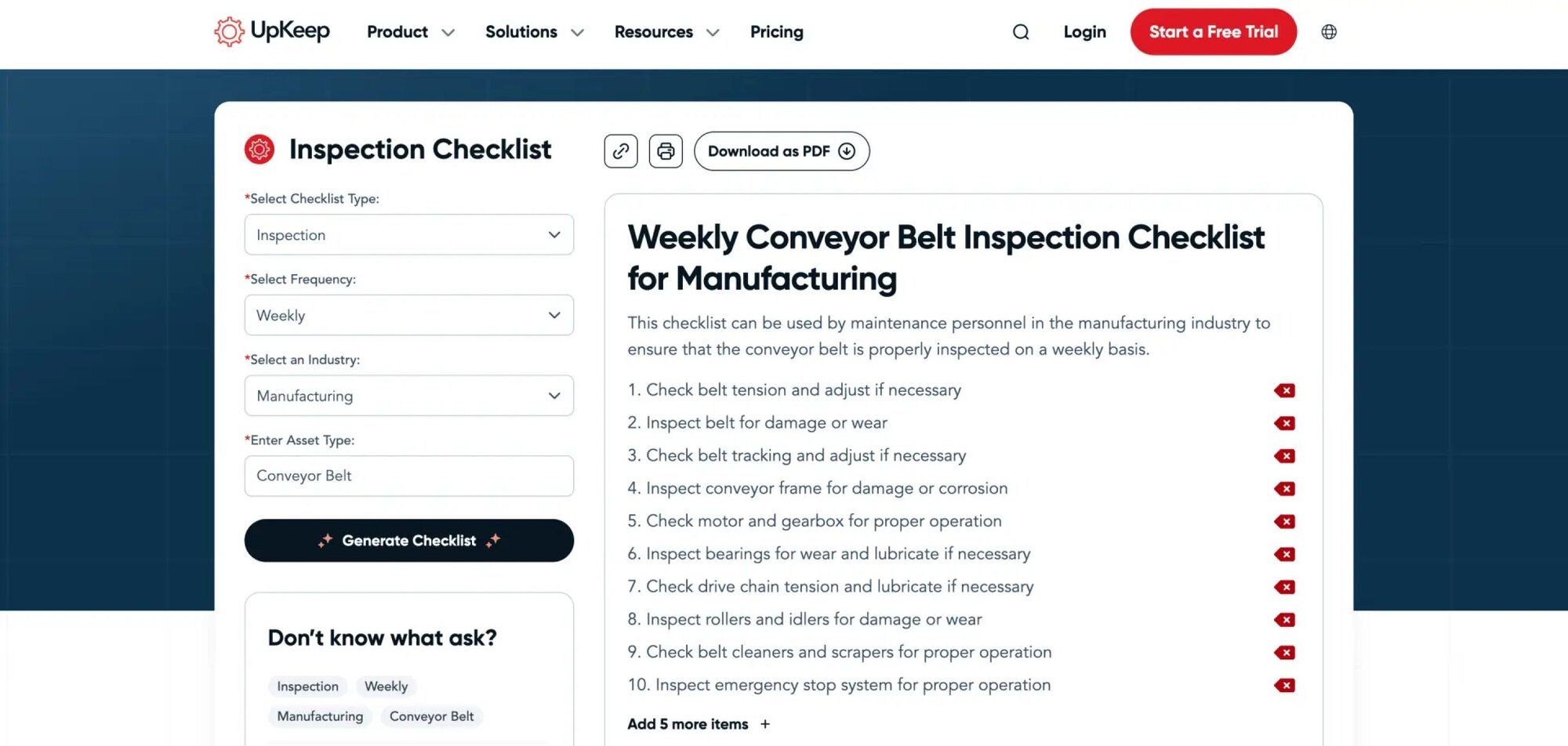
In just seconds, the AI comes up with a comprehensive checklist for this specific circumstance. To provide a superb user experience, the Checklist Generator includes several features that increase the tool’s convenience, such as:
- An option to copy the checklist to your Clipboard.
- An option to download the checklist as a PDF.
- An option to print the checklist.
- The ability to add or remove items from the checklist.
- Four exemplary prompts to help new users get familiar with the tool’s functionality.
This tool makes for an extremely seamless and efficient user experience. First, it saves users a significant amount of time. Rather than combing through several generic search results in Google to find the best answer, users can instantly receive a curated checklist that is tailored to their precise use case.
Secondly, the process can be used over and over again. Checklists for an entire business can be formulated, downloaded, and distributed in just a matter of minutes with UpKeep.
AI-Powered Search Engine
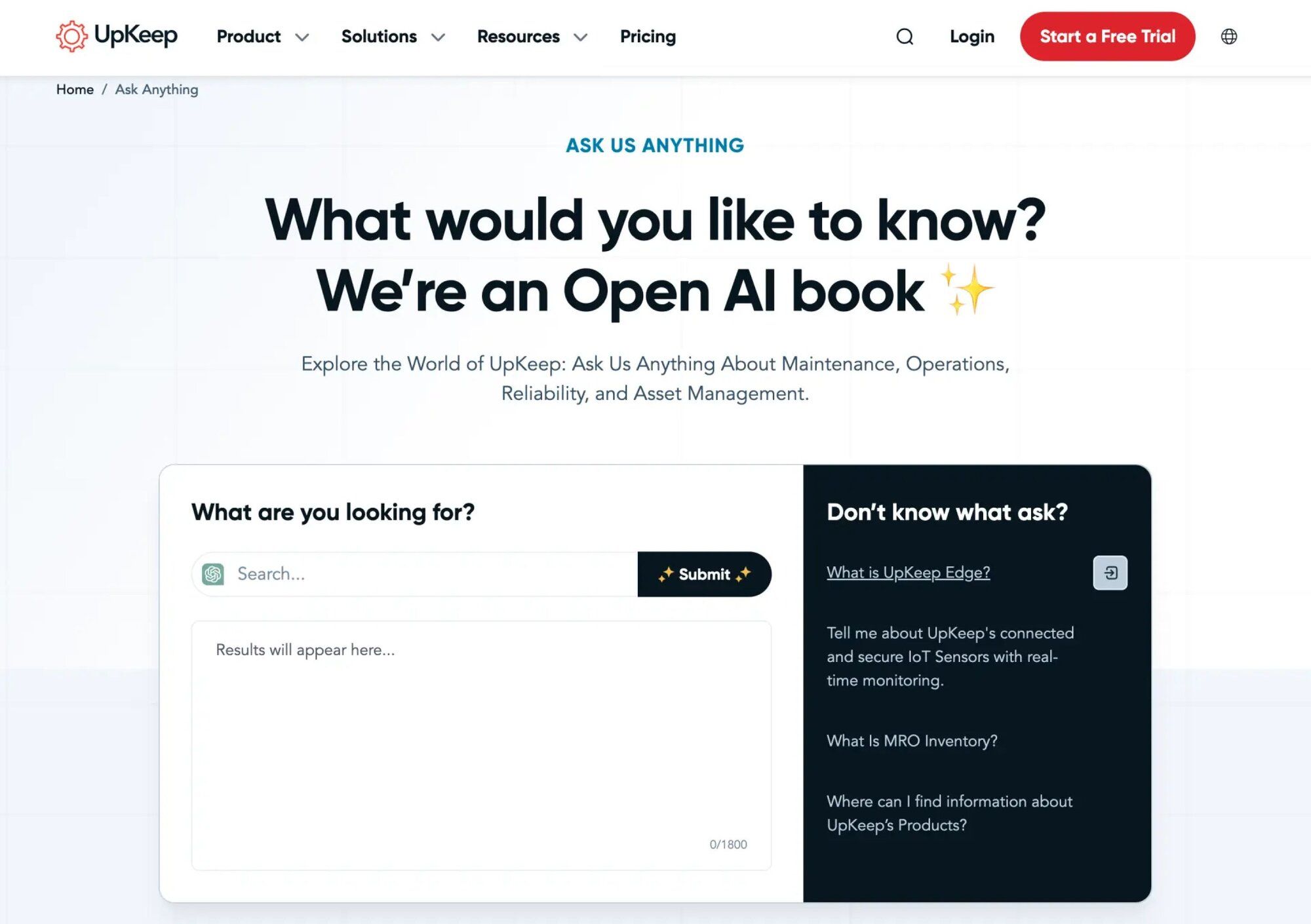
Our second OpenAI project with UpKeep is this AI-powered search engine. The tool is an innovative Q&A system that generates responses based on data only sourced from UpKeep’s website.
Here is a simple explanation of how it works:
OpenAI scrapes all 3,800 web pages on the domain, extracts all the content, and stores it in a data repository. From product pages, solution pages, blogs, learning center resources, and beyond - all this information exists in one central library.
By compiling all the content, the AI formulates an extensive knowledge base of UpKeep, its competencies, and any other information published on their site. Equipped with this knowledge and the GPT-3 advanced language model, the AI can generate descriptive responses to any relevant questions it is prompted with.
In addition to having its own the landing page, the AI is also integrated into the global search of the website (located in the top right corner of the header).
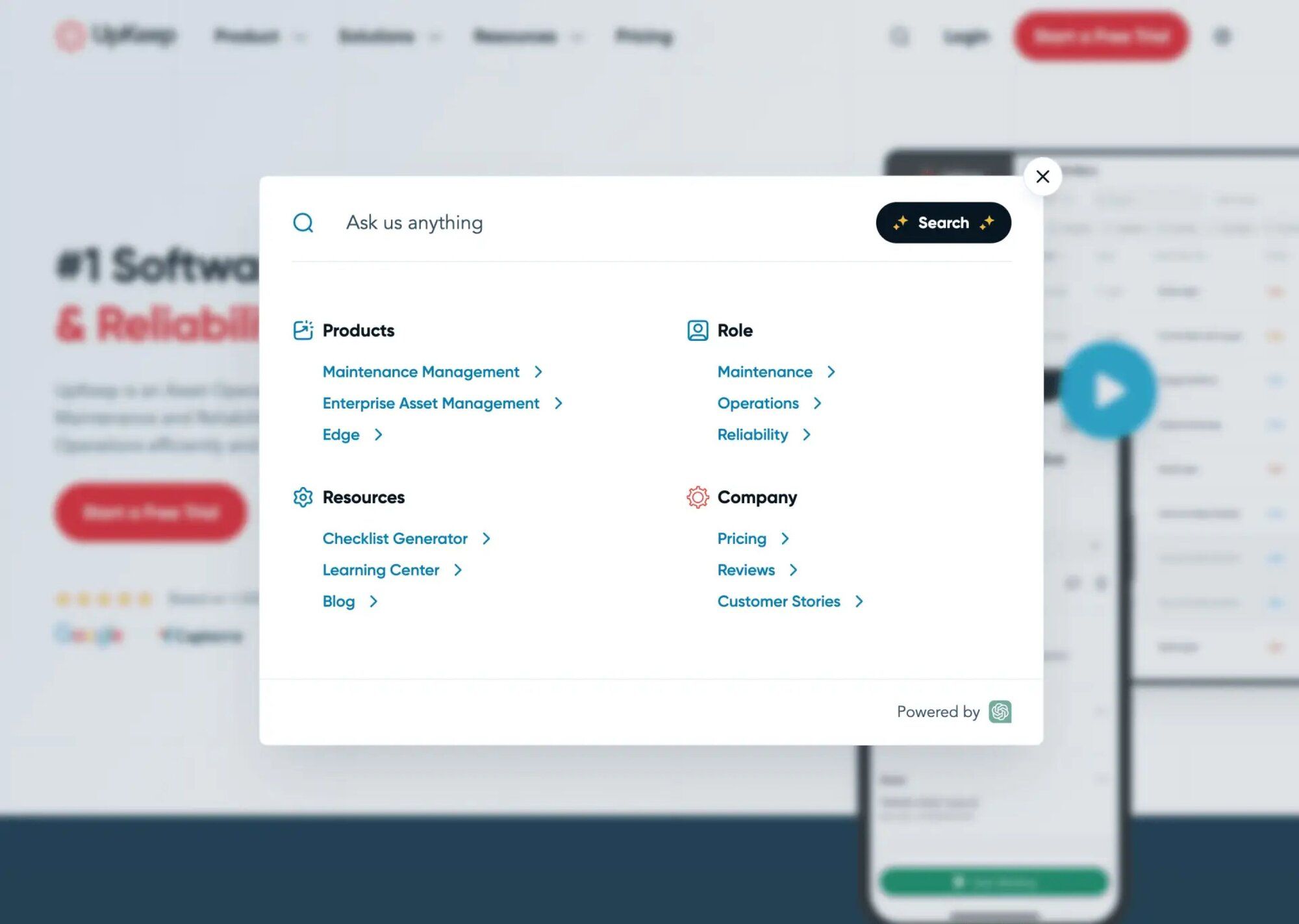
For example, we can ask, “Will UpKeep work for my trucking company?” We programmed the AI to produce then a response broken down into three distinct sections.
First, it provides a detailed AI suggestion written by the language model. In the text, it can even link out to relevant pages and drive users towards conversion points like a demo.
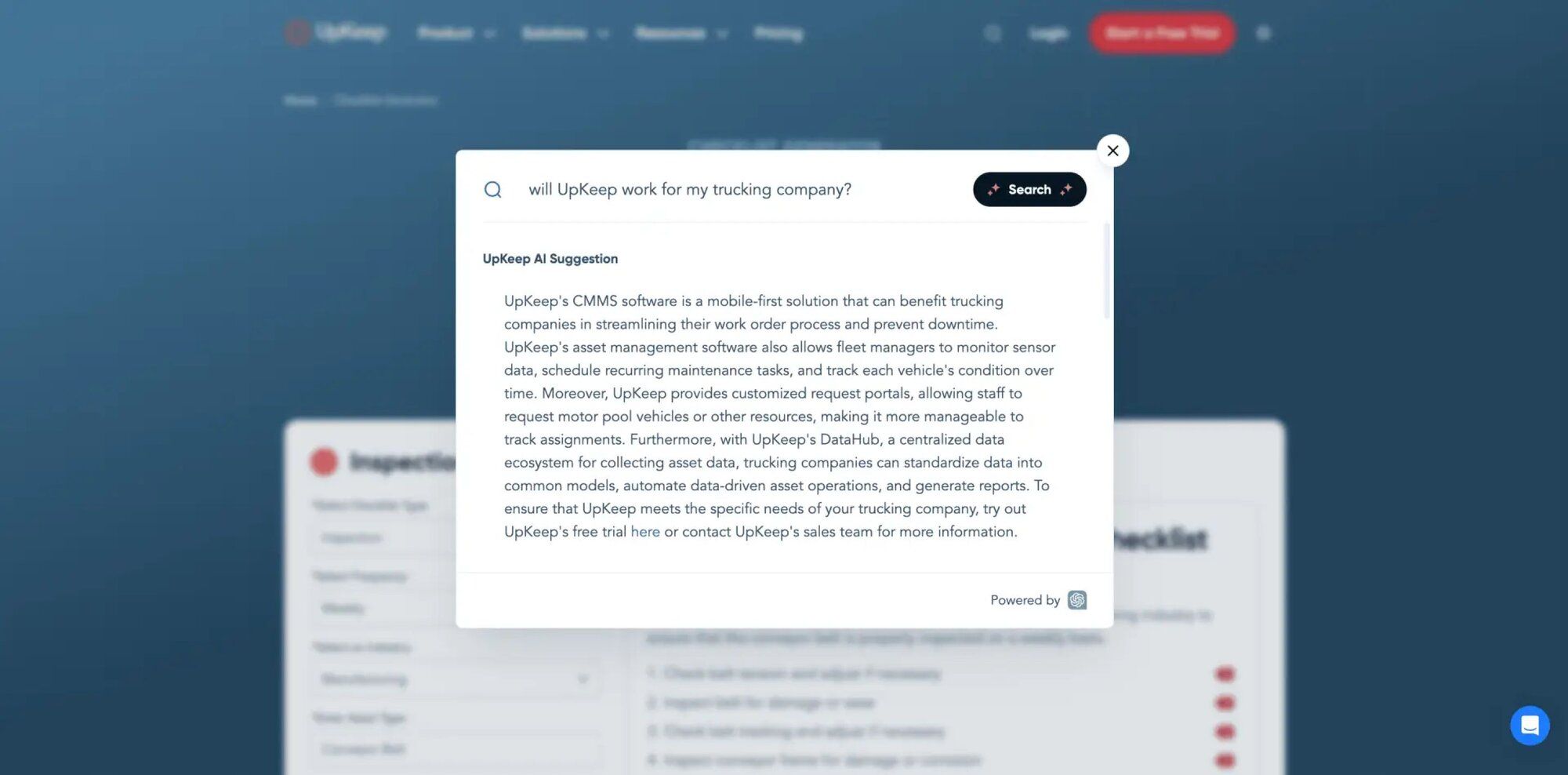
Next, it displays a list of search results highlighting pages that may be most helpful for the user to explore next. This is an excellent way to keep users on the site longer and lead them down an effective customer journey.
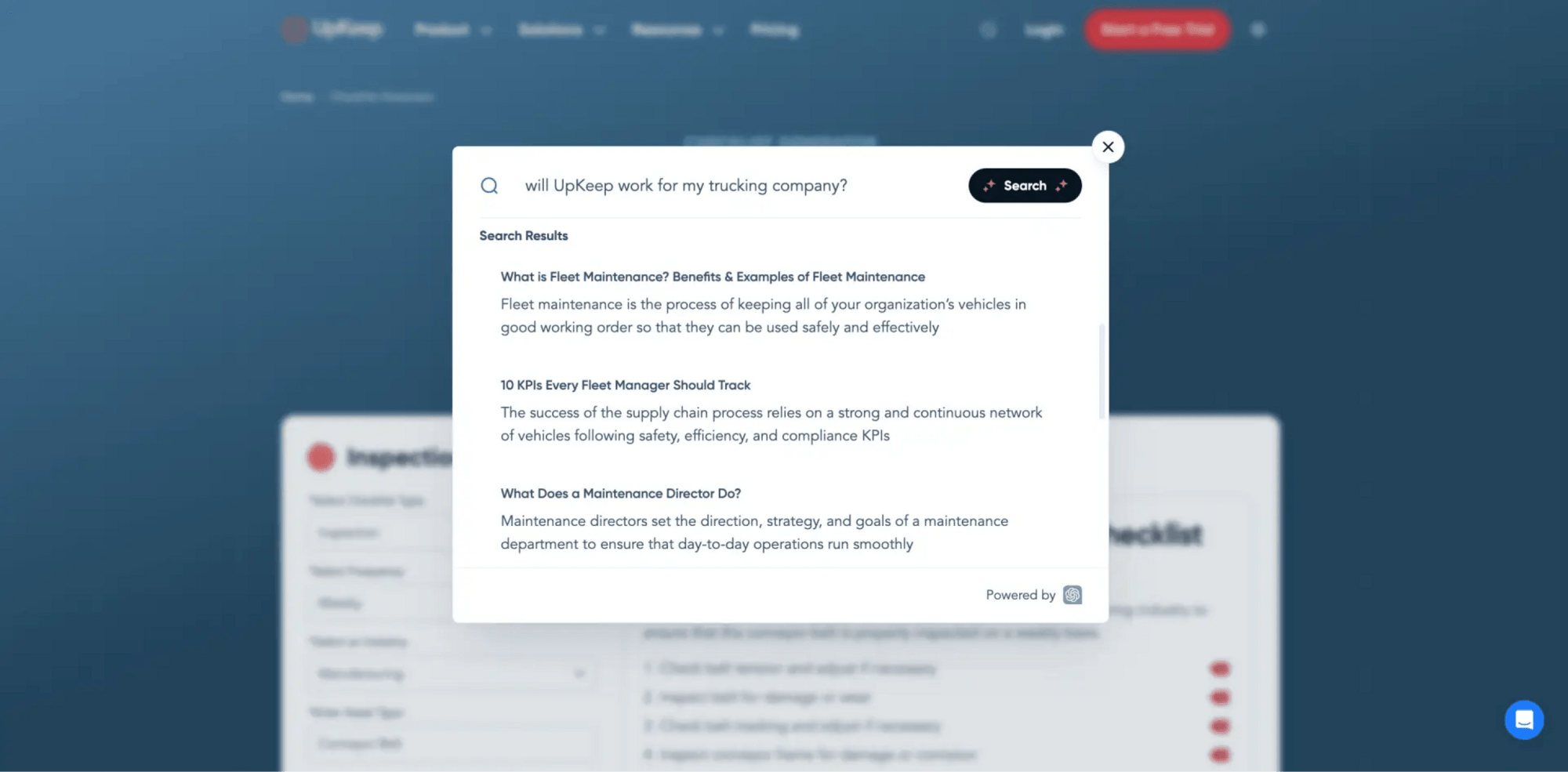
Finally, the AI generates several relevant questions to follow up with. Once a user clicks on one, it regenerates an entirely new AI response along with different search results and other relevant questions.
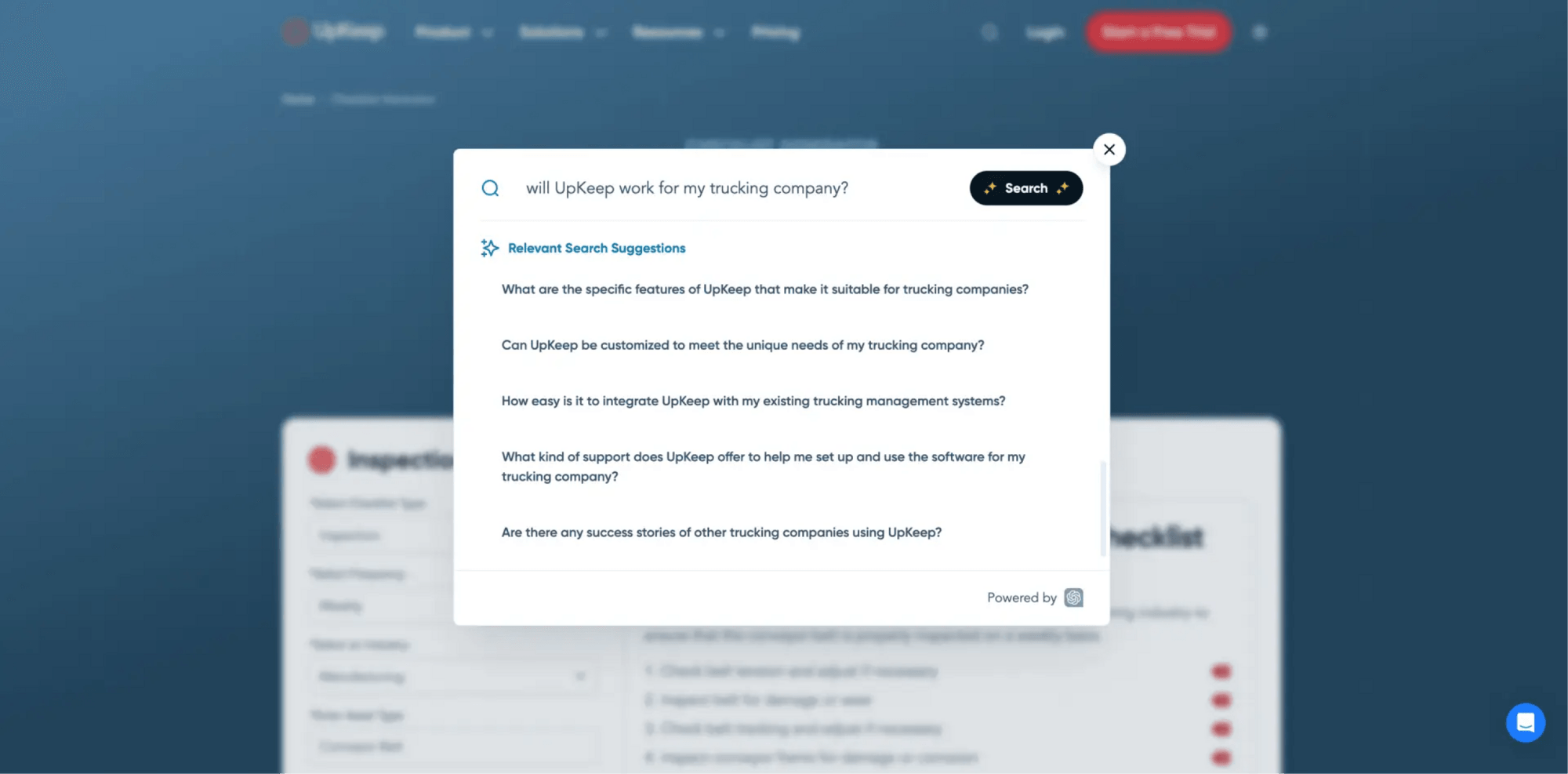
The way the AI can store, process, and extract data from a website is like nothing ever seen before. With this tool, you are building a vast data repository from a robust and diverse amount of content. UpKeep now has a digital encyclopedia for the nearly 4,000 pages of content. All this information is transformed into an invaluable database for everything related to UpKeep - and extracting any of this information is as simple as asking the AI a question.
Another key point is that the responses the AI generates will get smarter and more helpful over time. As the website grows, so will the repository. And when more users interact with the AI, its skills will get even better. This is nothing like a traditional chatbot.
It is a self-sustaining, evergreen source of content creation, a repository, and an NLP tool that analyzes any data about your business for you. If you haven’t yet, go try it out for yourself!
Conclusion
The applications for AI are seemingly endless, and we are excited to see what we build with UpKeep next. At this point, it is plausible that this technology and the tools being built with it have the potential to fundamentally shift how users experience websites - especially in SaaS.
Artificial intelligence is making it easier for users to extract information from your website and understand your business. And the easier this is, the better of a chance you have converting that visitor into a paying customer. For all of those in B2B SaaS marketing, you should absolutely be exploring how AI can be integrated into your marketing website.
If you’re interested in how AI could elevate your SaaS website, we’d be happy to help you learn more!

